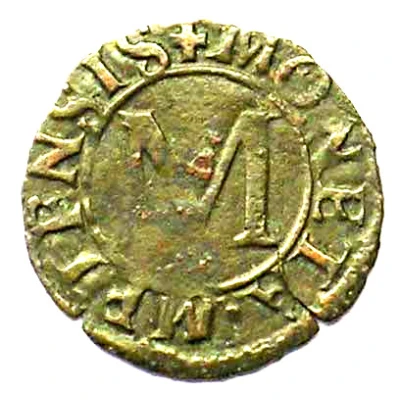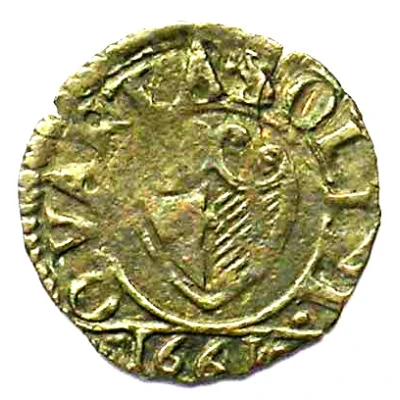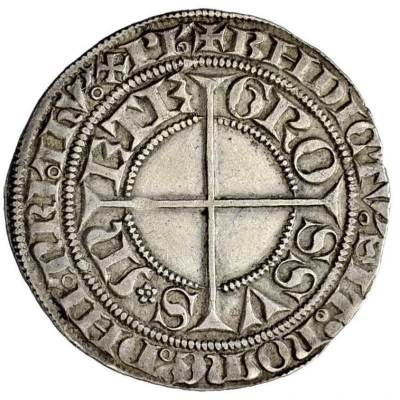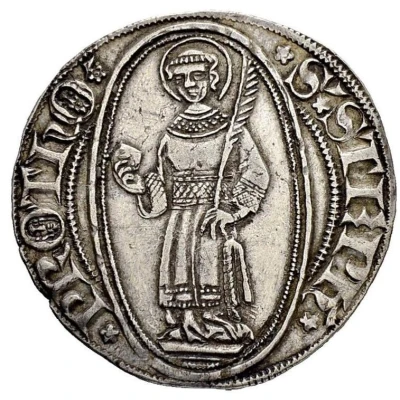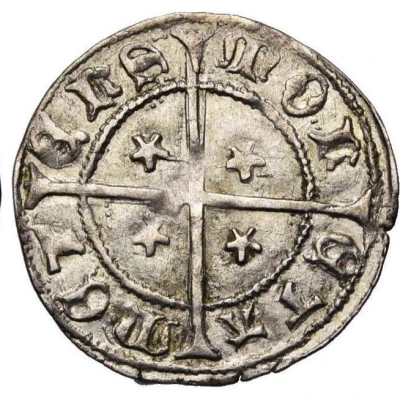
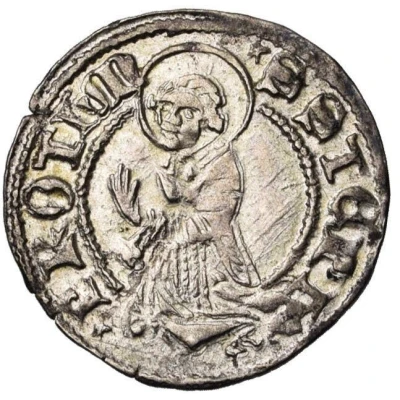

© Jean Elsen & ses Fils s.a.
Bugne / ⅓ Groschen ND
| Billon | 1.0 g | 19 mm |
| Issuer | City of Metz (French States) |
|---|---|
| Type | Standard circulation coin |
| Years | 1394-1500 |
| Value | Bugne = 4 Denier = ⅓ Groschen (1⁄60) |
| Currency | Thaler |
| Composition | Billon |
| Weight | 1.0 g |
| Diameter | 19 mm |
| Shape | Round (irregular) |
| Technique | Hammered |
| Demonetized | Yes |
| Updated | 2024-10-04 |
| Numista | N#365211 |
|---|---|
| Rarity index | 95% |
Reverse
Saint Stepehen, nimbate and kneeling left, within beaded inner circle.
Script: Latin
Lettering: ⋆ S' STEPH ⋆ PROTHM
Unabridged legend: Sanctus Stephanus Prothomartyr
Translation: Saint Stephen, protomartyr
Comment
This coin is often confused with the later bugne of the Bishopric of Metz (see link).This earlier type can be identified by the older style of lettering (gothic or "oncial") and the difference in the reverse legend (MONETA METEN).
Interesting fact
The Bugne / ⅓ Groschen coin from the City of Metz (French States) was made of Billon, which is an alloy of copper and silver. This coin was issued during the reign of King Charles VI of France, who ruled from 1380 to 1422. The coin's design features a cross fleury, which was a symbol of the French monarchy, and the letters "K" and "M" on either side of the cross, representing the king's name and the city of Metz, respectively. Despite its small size and relatively low denomination, this coin is considered a rare and valuable collector's item among numismatists today.
